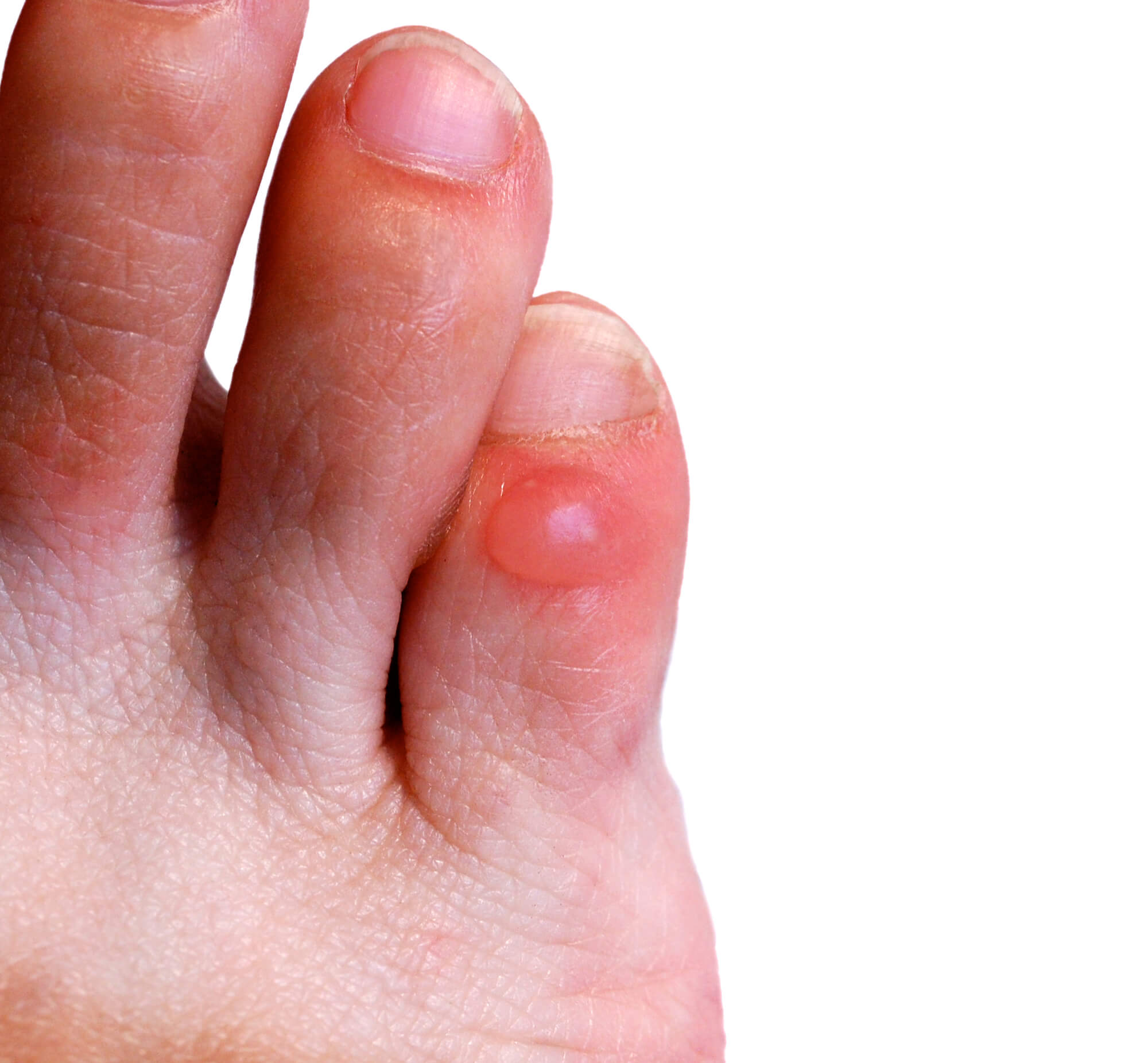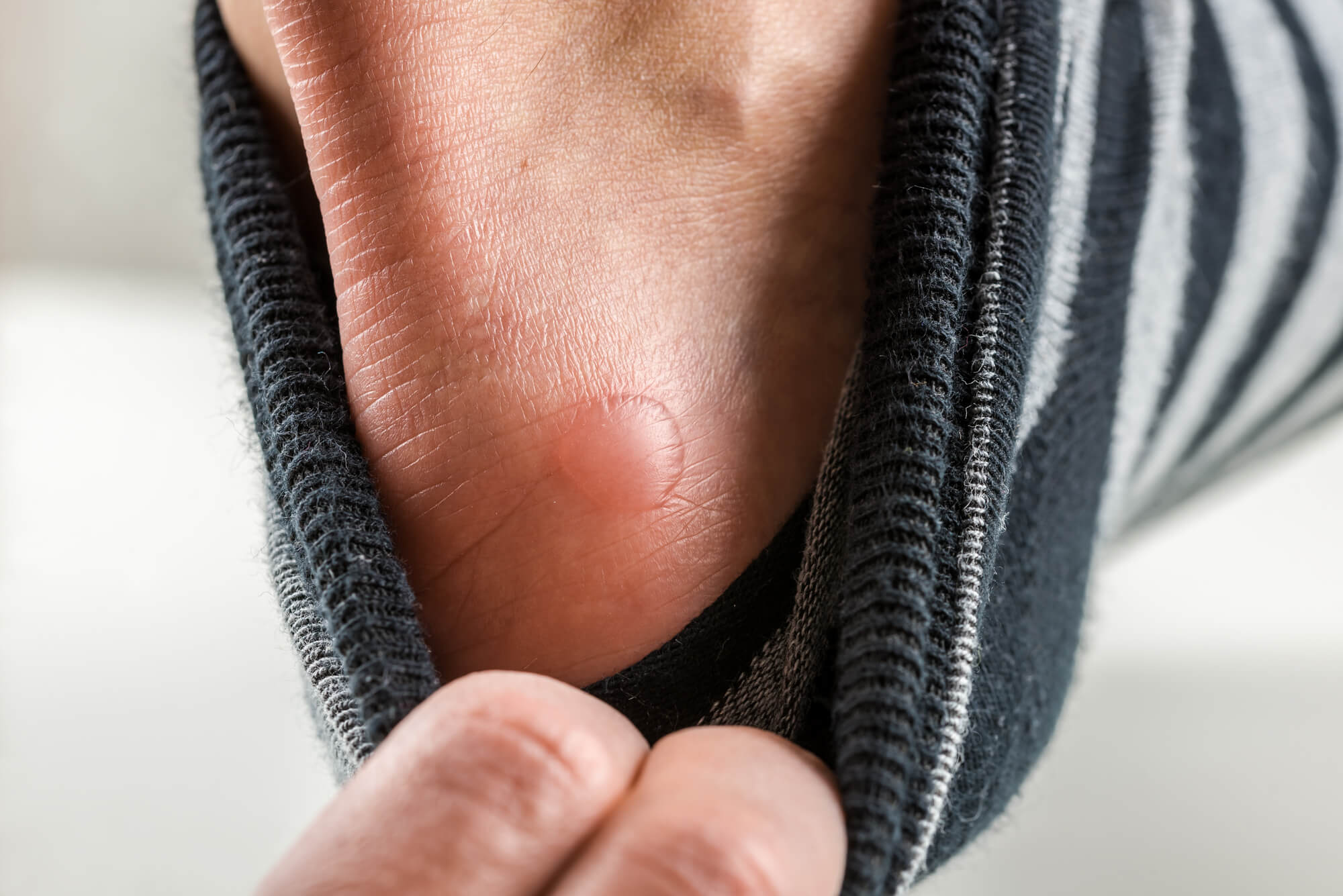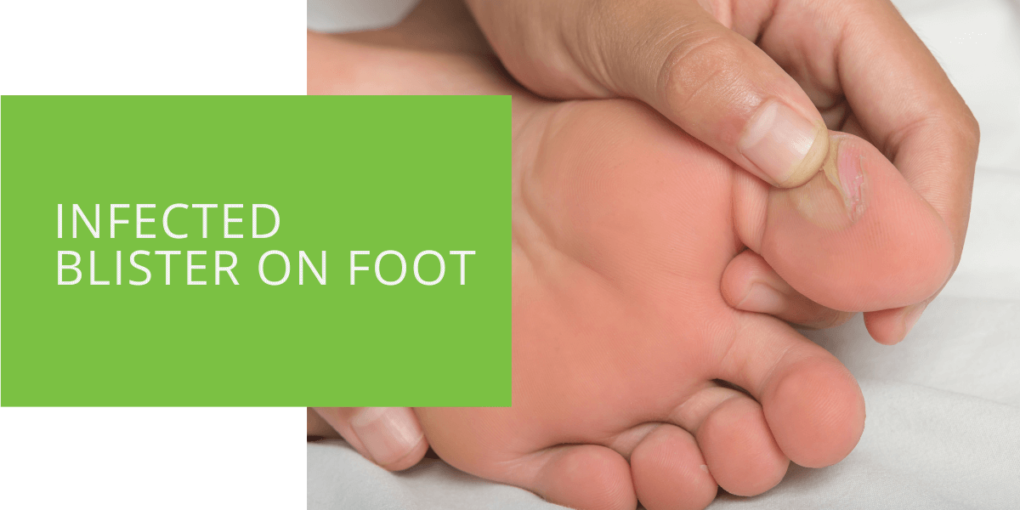Infected Blister on Foot: Causes, Symptoms & Treatment
An infected blister on your foot can be a painful and uncomfortable experience. It occurs when a blister becomes contaminated with bacteria, fungi, or other pathogens. If left untreated, an infected blister can cause complications and even spread to other parts of your body. This article will explore the causes, symptoms, and treatment options.
What Is a Blister?
A blister is a small pocket of fluid that forms between the upper layers of the skin. It is a natural response to friction, pressure, or skin irritation. While blisters can be uncomfortable, they usually heal within a few days. However, a blister that is infected can take longer to heal and may require medical attention.
Causes of Infected Blister on Foot
An infected blister on your foot can be caused by several factors, including:
Friction and Pressure on the Foot
Friction and pressure on the foot can cause blisters to form. If left untreated, the blister can become infected. This is because the skin around the blister can become compromised, allowing bacteria to enter the area.
Popping or Piercing a Blister with Dirty Tools
Popping or piercing a blister with dirty tools can introduce bacteria into the area, causing an infection. If you must pop a blister, it is essential to use sterile equipment and clean the area thoroughly afterward.
Exposure to Bacteria or Fungi in Damp Environments
Exposure to bacteria or fungi in damp environments, such as public showers or swimming pools, can increase the risk of an blister getting infected.
Poor Hygiene and Cleanliness
Poor hygiene and cleanliness can lead to a higher risk of skin infections, including infected blisters. It is essential to keep your feet clean and dry to prevent infection.
Wearing Tight or Ill-fitting Shoes
Wearing tight or ill-fitting shoes can cause friction and pressure on the foot, forming blisters. If the blister is not treated properly, it can become infected.

Symptoms of Infected Blister on Foot
A blister that is infected on your foot can cause a variety of symptoms, including:
Pain, Tenderness, or Soreness Around the Blister
An infected blister can be painful and tender to the touch. The skin around the blister may be red, swollen, or warm to the touch.
Swelling, Redness, or Warmth in the Affected Area
Swelling, redness, or warmth in the affected area is a common symptom of a blister that is infected. The skin around the blister may feel hot or feverish.
Pus or Other Discharge from the Blister
An infected blister may produce pus or other discharge from the blister. This is a sign that the blister is infected and requires medical attention.
Fever or Chills in Severe Cases
In severe cases, the infection can cause fever or chills. This is a sign that the infection has spread beyond the blister and may affect other body parts.
Difficulty Walking or Putting Weight on the Foot
If the blister is on the sole of your foot, it can be difficult to walk or put weight on the affected foot.

Diagnosis of Infected Blister on Foot
A podiatrist can diagnose an infected blister on your foot by performing a physical examination, analyzing your medical history and symptoms, and performing tests to identify the specific cause of infection, such as a bacterial culture or biopsy.
Treatment of Infected Blister on Foot
If you have an infected blister on your foot, it is essential to seek medical attention as soon as possible. The treatment options for a blister that is infected on your foot may include the following:
Cleaning and Disinfecting the Blister with Antiseptics
Cleaning and disinfecting the blister with antiseptics is essential in treating an infected blister. This can help to remove any bacteria or other pathogens that may be present in the area.
Applying Topical Ointments or Creams to Soothe and Heal the Affected Area
Applying topical ointments or creams to the affected area can help to soothe and heal the blister. These topical medications may contain antibiotics or other active ingredients that can help to reduce inflammation and promote healing.
Draining the Blister if Necessary and Treating it with Antibiotics
If the blister is particularly large or contains a significant amount of pus or other discharge, it may need to be drained. Your podiatrist can perform this procedure safely and effectively using sterile equipment and techniques. In some cases, antibiotics may be necessary to treat the infection.
Taking Pain Relievers or Anti-inflammatory Medication to Reduce Discomfort and Swelling
If you are experiencing discomfort or swelling due to a blister that is infected on your foot, your podiatrist may recommend taking pain relievers or anti-inflammatory medication. These medications can help to reduce pain and inflammation, allowing you to recover more quickly.

Resting and Elevating the Affected Foot to Promote Healing
Resting and elevating the affected foot can help to promote healing and reduce swelling. This can be particularly helpful if the infected blister is on the sole of your foot or in another area that experiences a lot of pressure or friction.
Wearing Clean, Dry, and Properly Fitting Shoes to Prevent Further Irritation and Infection
Once your infected blister has been treated, it is essential to prevent further irritation and infection. This can include wearing clean, dry, and properly fitting shoes, using first aid to protect the affected area, and practicing good foot hygiene.
Prevention of Infected Blister on Foot
The best way to prevent a blister from getting infected on your foot is to take steps to reduce your risk of developing blisters in the first place. This can include:
Wearing Comfortable, Supportive, and Breathable Footwear
Wearing comfortable, supportive, and breathable footwear can help to reduce your risk of developing blisters. This can include shoes designed to provide extra cushioning or support for your feet.
Keeping Feet Clean and Dry
Keeping your feet clean and dry can help to prevent skin infections, including infected blisters. This can include washing your feet regularly with soap and water and drying them thoroughly after bathing or showering.
Avoiding Walking Barefoot in Public Places
Walking barefoot in public can increase your risk of developing infections, including fungal infections that can lead to blisters becoming infected. It is essential to wear shoes or sandals in public areas to reduce your risk of infection.
Not Popping or Piercing Blisters
Popping or piercing blisters can increase your risk of infection, as they can introduce bacteria into the area. It is essential to let blisters heal on their own without popping or piercing them.
Using Sterile Tools and Equipment When Treating Blisters at Home
If you must treat a blister at home, using sterile tools and equipment is essential. This can include using clean needles to drain blisters, sterile bandages, or ointments to protect the affected area.
Conclusion
An infected blister on your foot can be a painful and uncomfortable experience. However, most blisters that are infected can be effectively treated with proper treatment and care, allowing you to heal and recover. If you suspect an infection, seeking medical attention as soon as possible is essential. Your podiatrist can diagnose and treat the infection, helping you to recover more quickly and reduce your risk of complications.
By preventing blisters and practicing good foot hygiene, you can reduce your risk of developing infected blisters on your feet. This can include wearing comfortable and supportive footwear, keeping your feet clean and dry, and avoiding walking barefoot in public places. If you develop a blister, it is essential to let it heal on its own and avoid popping or piercing it.
While there are many home remedies and over-the-counter treatments for blisters, it is always best to seek medical attention if you suspect your blister is infected. Your podiatrist can recommend the best treatment for your specific situation, helping you heal and recover more quickly. With proper care and attention, you can prevent and treat the blisters on your feet, allowing you to stay active and healthy.
FAQ
How do you treat an infected blister on your foot?
The treatment for an infected blister on your foot will depend on the severity of the infection. The treatment may include cleaning and disinfecting the blister with antiseptics, applying topical ointments or creams to soothe and heal the affected area, draining the blister if necessary, and taking pain relievers or anti-inflammatory medication to reduce discomfort and swelling. Your podiatrist may also recommend resting and elevating the affected foot and wearing clean, dry, and properly fitting shoes to prevent further irritation and infection.
Do I need antibiotics for an infected blister?
In some cases, antibiotics may be necessary to treat an infected blister. This is particularly true if the infection is severe or has spread to other parts of your body. Your podiatrist will evaluate the severity of the infection and recommend the best course of treatment for your specific situation.
What should you put on an infected blister?
If you have an infected blister on your foot, cleaning and disinfecting it with antiseptics is essential. You can then apply topical ointments or creams to soothe and heal the affected area. These topical medications may contain antibiotics or other active ingredients that can help to reduce inflammation and promote healing. Your podiatrist may also recommend taking pain relievers or anti-inflammatory medication to reduce discomfort and swelling.
When should I go to the doctor for an infected blister?
You should seek medical attention if you suspect an infected blister on your foot. This is particularly true if the blister is painful or swollen or produces pus or other discharge. Additionally, if you have a fever or chills or notice red streaks or other signs of infection, it is important to seek medical attention as soon as possible. Your podiatrist can diagnose and treat the infection, helping you to heal and recover more quickly.

